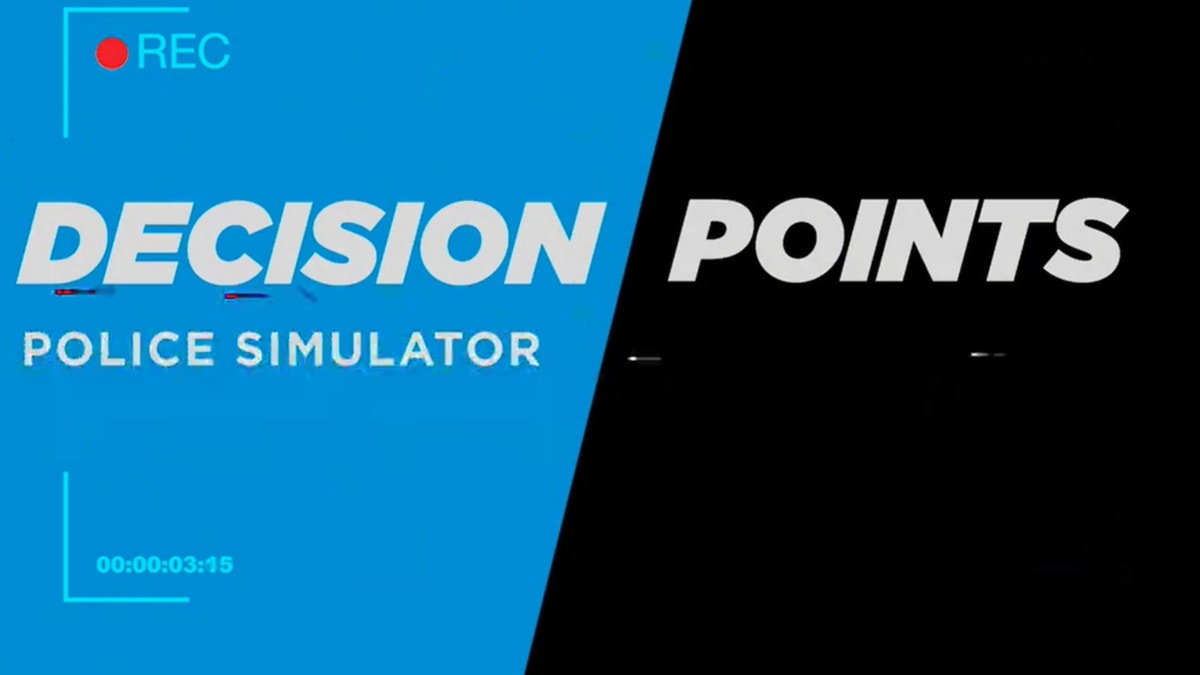Maine police chief: 'Negative media attention' playing a role in officer shortage
Brewer police chief Jason Moffitt joined 'Fox & Friends Weekend' to discuss the incentives offered to attract new hires, including a $20,000 signing bonus.
FIRST ON FOX: A nonprofit committed to defending law enforcement officers who are charged — sometimes wrongfully — in controversial use-of-force cases has launched an online police simulator to help educate the public on the rapid, life-altering decisions officers make on a regular basis while responding to crimes.
The Law Enforcement Legal Defense Fund’s (LELDF) "Decision Points" police simulator uses real-life police bodycam footage to educate the public and community leaders on the kinds of quick decision-making skills officers must use during interactions with potentially violent individuals.
"It raises the public consciousness. It raises the need for the public to understand why the officers may have done what they did …," LELDF President Jason Johnson told Fox News. "[Users] can learn some new information about how officers are trained to respond and why. This, we think, will reduce some of the harmful misunderstandings of law enforcement."

Decision Points (LELDF)
Officer-worn body camera footage has increased public awareness of officers’ use of force, but some viewers do not always understand why police make certain decisions, such as the decision to shoot a suspect in the chest rather than the leg.
KIM POTTER TRIAL: JURY INSTRUCTIONS SET IN CASE OF DAUNTE WRIGHT'S SHOOTING DEATH
Misconceptions and confusion regarding officers’ quick decision-making efforts can make an already controversial situation even more difficult for the public to swallow.
The Decision Points simulator is supposed to help educate the public on this matter. The simulator walks viewers through different scenarios from officers’ points of view and asks users to decide what actions the officer should take when the time to make a decision arises.
For example, the first simulation asks users whether an officer should Taser a stabbing suspect who is wielding a knife, shoot a knife out of the suspect's hand or move away from the suspect as police attempt to get him to drop the weapon. The simulation then tells users whether their answers are correct or incorrect based on typical law enforcement rules and best practices.

Decision Points (LELDF)
At the end of the simulation, users can click on links that direct them to answers from industry experts regarding additional questions they may have, such as, "Why not aim at the hands?" and "Are knives really so dangerous?"
HANDCUFFING POLICE RESPONSE CREATING A LOCAL MENTAL HEALTH CRISIS
"We just want people to have a more balanced understanding of...when they see a video of a police officer using force or see a story of a police shooter, we want them to understand some of the dynamics at play and why officers may react the way they do," Johnson said. "And the only way to gain that understanding is to personally experience it."
He added that the project gives people a new way to interpret the police encounters they see online and "debunk" the different ways they think police officers might be able to respond to a situation but aren’t "feasible or practical" in real life.

Decision Points (LELDF)
Since the May 25, 2020, murder of George Floyd and even prior to that, "there has been an activist-led groundswell of anti-law enforcement sentiment," Johnson explained.
"As a result, there has been a real shift in public sentiment about law enforcement, which has led to calls for defunding the police, increase prosecutions for law enforcement officers involved in uses of force. And, really, I think the whole goal here is to bring some balance back to the conversation. And for those who are willing to learn, it opens up room for discussion and debate about how law enforcement does respond to these challenges and...ways to improve how law enforcement responds to the extent that this response can be improved."
CLICK HERE TO GET THE FOX NEWS APP
The National Fraternal Order of Police, the world's largest organization of law enforcement officers, last week reported a record 314 officers shot in the line of duty — 58 of whom were killed. Additionally, the FOP recorded 95 ambush-style attacks so far this year – a 126% increase compared to 2020 – that resulted in 119 officers shot, 28 of whom were killed.
Meanwhile, the Mapping Police Violence database has recorded 960 police killings — or 960 individuals killed by police officers — so far in 2021. Most police killings (33%) began with alleged violent crime encounters, other nonviolent offenses (18%) and traffic stops (11%), according to the database.



